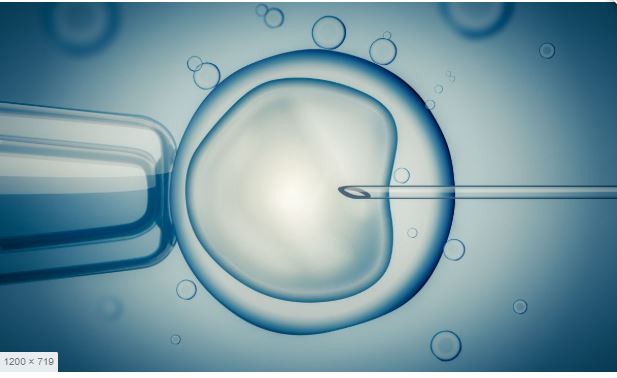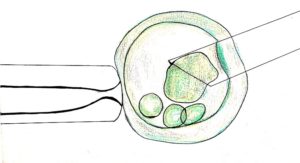The process of harvesting eggs from the ovary involves the embryologist isolating the eggs from the follicular fluid and placing them in an incubator under optimal conditions. At this stage, each egg is still wrapped in its outer layer, known as the cumulus oophorus (which looks like a cloud that surrounds the egg). The cumulus oophorus is made up of hormone secreting cells known as granulosa cells.
For injecting the egg with an isolated sperm cell, the cumulus oophorus cells have to be “pilled” off the egg. Removing this layer of cells reveals the outer shell around the egg known as the zona pellucida. Only when the egg is without its out layer can we determine if it is conditioned for fertilization, meaning that it has underwent Metaphase II and has a polar body.
The sperm injection is done so that the needle is inserted into the egg at 3 o’clock (relative to the egg) and the polar body is at 6 or 12 o’clock. This positioning is used to avoid causing any potential damage to the genetic cargo of the egg while injecting the sperm cell.
The injection process utilizes a micromanipulator device which holds the egg on one side while the needle is inserted into the other side of the egg. Before injecting the selected sperm cell, its tale is broken by hitting it gently to initiate the process of acrosome reaction, an important step for fertilization to occur, and this will also prevent the sperm cell from damaging the inside of the egg (it is important to note that in a natural fertilization the tale of the sperm cell stays outside of the egg).
Fertilization success rates with the micromanipulation technique are very high and exceed 80%.


